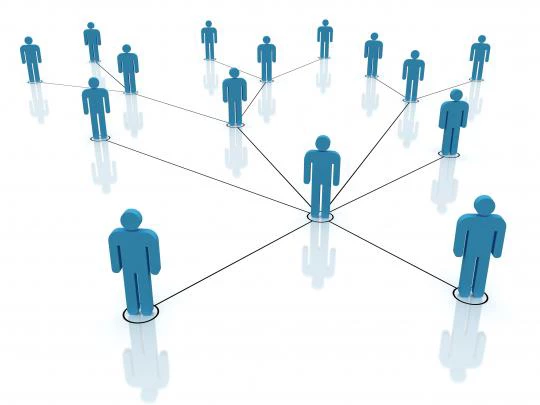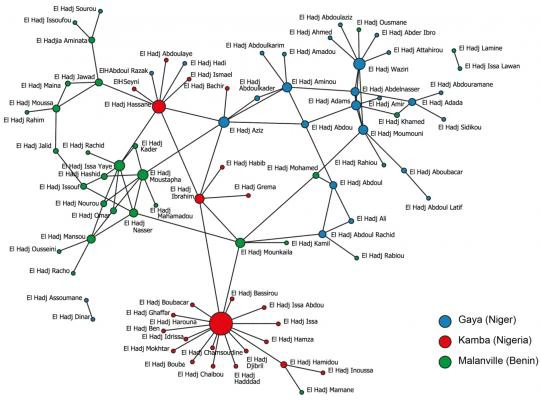
To some extent, it's a trade story. Price differences across its nearby borders, helped by a ban on imports of second-hand clothes in Nigeria, and an avoidance of tax collection by customs officials have all been important factors in explaining the boom of trade in the region. Yet, combining these with an analysis of the development of transnational networks gives a more complete picture.
This is where Social Network Analysis sheds new light on the story of Gaya, by looking at these interactions to help improve our understanding of the dynamics involved.
A newly formed community of network science practitioners at the World Bank organized its first event on this topic last month. Olivier Walther, associate professor at the University of Southern Denmark and visiting assistant professor at Rutgers University, presented his work on Social Network Analysis as applied to the study of transnationalism in West Africa. His presentation put forward several practical and theoretical tools that can be applied to a wide range of subjects-- from cross-border trade and markets to the study of terrorist groups-- and underlined the interdisciplinarity of such instruments.
The term “big data” is often associated with network science theory. In practice, however, data is not always available or easily obtained, especially when dealing with informal and untraced circuits, or hidden actors. One of the techniques that may be used in these situations is known as “snowballing.” The idea is to begin with a few known, key individuals. Then, build a network representation, step by step, based on the information they supply about their peers. In more delicate situations, when dealing with actors such as terrorists, gathering information through field work may likely be difficult. But the dynamics of these groups can still be traced with research using journalistic sources.
Network theory can easily become very abstract or so technical that the practical purpose of the exercise can sometimes be lost. In order to avoid this trend, there are a few straightforward questions that need to be addressed in the study of the dynamics of social networks.
To begin with, are the networks centralized or decentralized? This information provides a rough idea of their structure, their adaptability, and their resistance to disruption.
It is then critical to evaluate the centrality of individuals within these networks. Are they connected to a large number of other individuals (who would provide them access to various resources, e.g., financial, political)? Are they brokers, or any kind of obligatory intermediary? How close are they on average to other actors in the networks? Do they have the power to easily disseminate information?
Answering these questions helps to identify the individuals we would want to focus on and to determine the nature of the power they hold.
Taking a step back, there are questions on a broader scale. How strong are the ties? How high is the level of clustering, or in other words, is the network very “cliquish"?
Let’s look at an interesting application of these tools by going back to the example of Gaya and its neighboring border cities of Malanville and Kamba (in Benin and Nigeria respectively). Trade in this region relies heavily on establishing strategic relationships that create trust. The business ties between individuals in nearby towns-- across national borders-- allow for a flow of information about fluctuations in prices and market conditions, as well as changes in national regulations. Contact with someone who has strong ties to government, for example, might allow a merchant to negotiate exceptions to newly established rules. This contact with other individuals enables the actors to reduce uncertainties caused, for example, by national conflicts-- the business ties are personal and can, to some extent, ignore national borders.
Figure 1 shows a network representation of traders in the region. As you can see, the network is highly decentralized, making it more adaptable to uncertainty. People are more connected to others within their country, which is unsurprising. But it highlights the importance of a few “brokers,” who convey information across borders, connecting the country-based networks.
Figure 1: Cross-border business ties in the Gaya-Melanville-Kamba network
Understanding the position of central actors helps to determine the extent of trade in the region, as well as where it is concentrated. The dynamics observed give insight into how integrated the region is, what dependencies may exist, and the role of such markets in promoting exchange and productive activities. Where demographic size, administrative importance, or broader price considerations have traditionally been used, this highlights needs that may not have been addressed and could be an alternative (and perhaps more pertinent) way of identifying markets in which investment would be particularly relevant.
Walther’s presentation gave much food for thought on how network science can be applied in economic and political frameworks and how its policy implications can lead to implementing reform. But what are the next steps in analyzing social networks? How can we take into account the evolution of space and timeframe factors?
These versatile new tools will help change conventional strategies for approaching these issues. We hope they represent a promising avenue for future analyses performed by the World Bank Group and the International Monetary Fund.




Join the Conversation